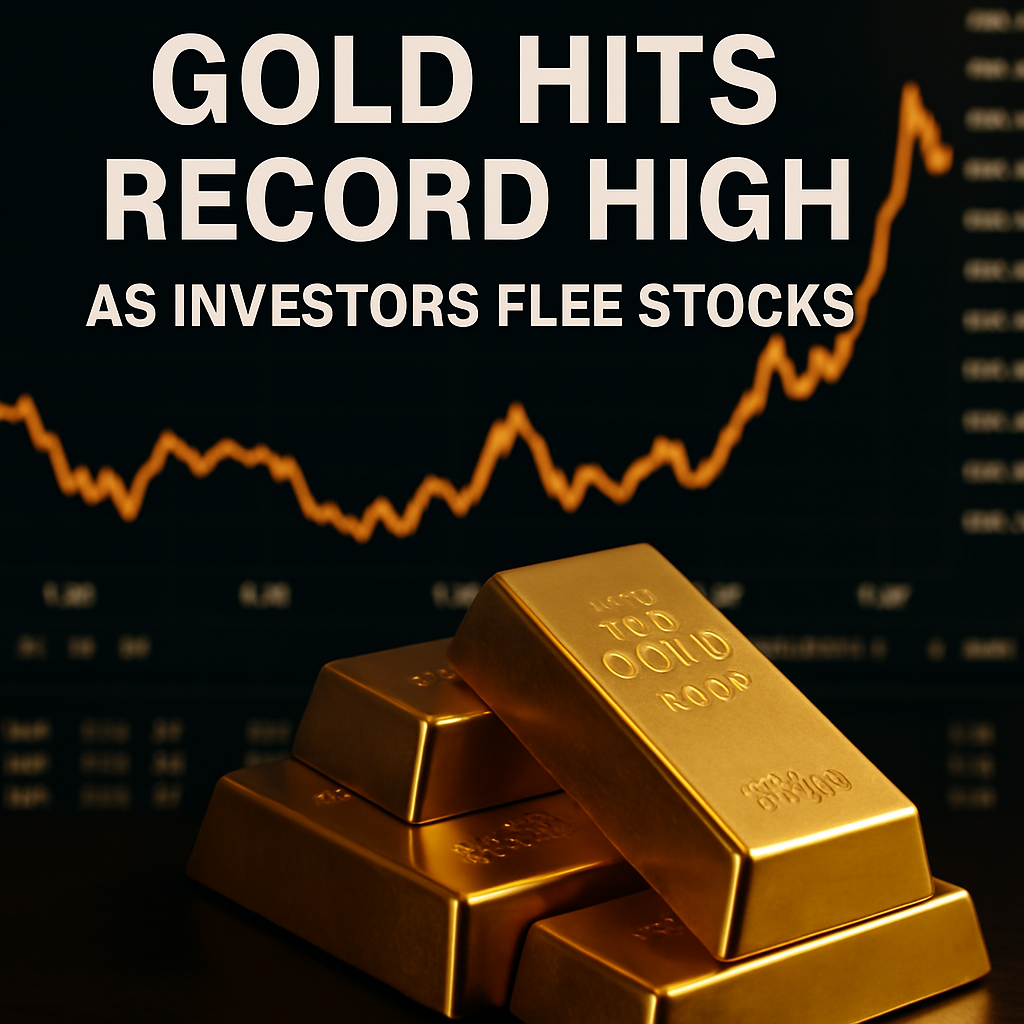
Amid economic uncertainty and increasing volatility in financial markets, gold has reached new all-time highs. Investors are abandoning equities in search of refuge in traditionally safe-haven assets. This phenomenon is driven by several factors, including geopolitical uncertainty, expectations of interest rate cuts, and growing concerns about inflation.
The Rise of Gold: A Safe Haven in Uncertain Times
Gold has surpassed the $3,100 per ounce mark, setting a historic record in its valuation. This surge has been fueled by the perception of the precious metal as a hedge against inflation and market instability. In times of crisis, investors tend to seek tangible assets with intrinsic value, such as gold, whose demand has grown significantly in recent months.
The increasing price of gold has also been influenced by the weakening of major global currencies. As inflation erodes purchasing power, many investors turn to gold as a reliable store of value. Historically, gold has performed well in times of financial distress, reinforcing its status as a key asset in a diversified investment portfolio.
Factors Driving Gold Demand
- Geopolitical Uncertainty: Tensions between global powers and regional conflicts have raised concerns in the markets, prompting investors to seek safer assets. Events such as trade wars, economic sanctions, and conflicts in energy-producing regions have added to market fears, increasing demand for gold.
- Expectations of Interest Rate Cuts: With the Federal Reserve and other central banks considering rate reductions, bond yields decline, making gold more attractive. Lower interest rates reduce the opportunity cost of holding non-yielding assets like gold, leading to increased investment.
- Inflation and Dollar Depreciation: The loss of purchasing power in fiat currencies makes gold a solid option for preserving wealth. Inflationary pressures have increased due to rising commodity prices and supply chain disruptions, prompting investors to shift their capital into assets that can maintain long-term value.
- Increased Central Bank Purchases: Many economies have expanded their gold reserves, driving up its market price. Central banks in emerging markets have particularly accelerated gold acquisitions to reduce reliance on the U.S. dollar and mitigate currency volatility.
- Stock Market Volatility: The global stock market has been experiencing fluctuations due to economic slowdowns and shifting investor sentiment. Many investors are liquidating their stock holdings in favor of safer alternatives, fueling the rise in gold prices.
Flight from Equities: A Market in Crisis
While gold reaches new highs, equity markets are experiencing increasing volatility. Major stock indices have recorded significant declines due to concerns over a global economic slowdown and uncertainty surrounding monetary policies. Corporate earnings forecasts have also been revised downward, adding to market pessimism. The tech sector, in particular, has suffered losses as rising operational costs and reduced consumer spending impact revenues.
The volatility in equities has been further exacerbated by fluctuating commodity prices and supply chain disruptions. Investors seeking stability have turned to assets with historically strong performance during downturns, reinforcing gold’s position as a preferred investment choice.
Comparing Gold and Equities: A Shift in Investment Preferences
Historically, equities have been favored for long-term growth, while gold has been seen as a hedge against economic downturns. However, recent market trends suggest a shift in investment preferences. Many investors are reallocating their portfolios, reducing stock exposure, and increasing their holdings in gold and other tangible assets.
Investment firms and hedge funds have also adjusted their strategies, increasing their positions in commodities and gold-backed exchange-traded funds (ETFs). The rise in demand for gold ETFs further highlights the growing confidence in gold as a key portfolio component during uncertain times.
Future Outlook and Investment Strategies
If economic uncertainty persists, gold could continue its upward trend. Many analysts recommend diversifying investments by balancing safe-haven assets with equity market positions to mitigate risks. As inflationary pressures remain high and interest rates fluctuate, gold is likely to retain its appeal as a store of value.
Some investment experts suggest a strategic approach, where a portion of the portfolio is allocated to gold-related assets, including mining stocks and ETFs. This allows investors to benefit from gold’s rising value while maintaining exposure to other sectors.
Moreover, central bank policies and global economic developments will play a crucial role in determining the future of gold prices. Any unexpected economic shocks, policy changes, or geopolitical events could further accelerate demand for gold.
Conclusion
The shift towards gold investments reflects the search for stability in an increasingly challenging financial environment. As investors flee from equities, gold has emerged as a safe-haven asset, reaching record-breaking prices. The ongoing economic and geopolitical landscape will determine whether gold continues its rally or stabilizes at current levels. Regardless, its role in investment portfolios remains vital for risk management and wealth preservation.







